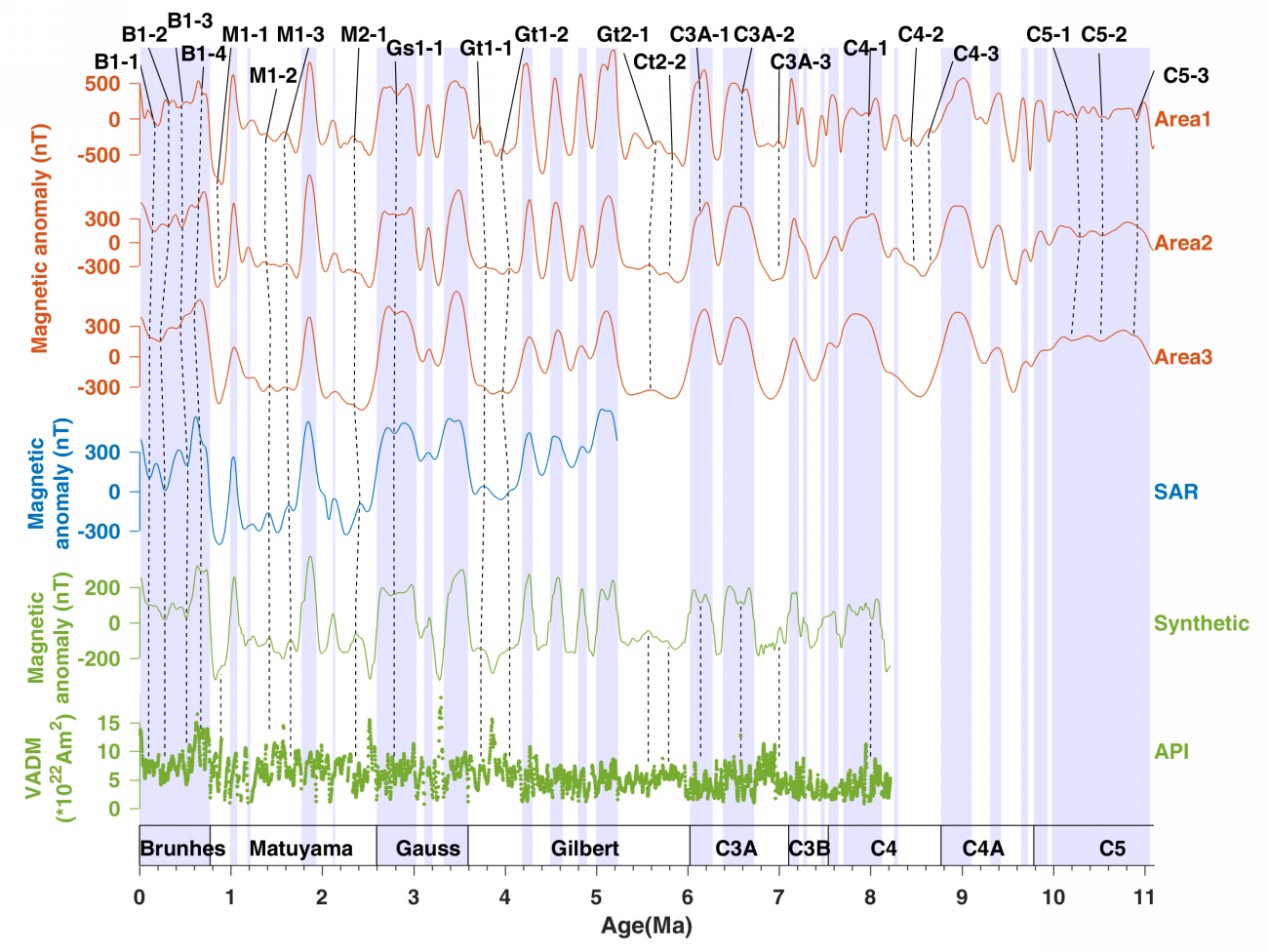SUSTech researchers make significant breakthrough on marine magnetic anomalies
Jun 15, 2021
Recently, the Centre for Marine Magnetism (CM2) team from the Department of Ocean Science and Engineering (OSE) of the Southern University of Science and Technology (SUSTech) made new breakthroughs in the study of marine magnetic anomalies by constructing the longest continuous curve of the geomagnetic field intensity over the past 11 million years. Their paper, entitled “Geomagnetic Field Paleointensity Spanning the Past 11 Myr from Marine Magnetic Anomalies in the Southern Hemisphere,” was published in Geophysical Research Letters, a leading journal in the field of Earth Sciences.

Earth’s magnetic field shields our planet from solar and cosmic radiation
The Earth’s magnetic field, like a giant umbrella, shields our planet from solar and cosmic radiation. Studies on changes and mechanisms of the intensity and direction of the geomagnetic field have always been on the frontier of scientific topics. Previous studies on this story relied on sediment records. However, it is usually challenging to find a thick sedimentary column for constructing long-term changes in the geomagnetic field intensity. Scientists have only constructed the intensity changes of the geomagnetic field over the past 8 million years. In addition, the sedimentary records are complex and ambiguous. Therefore, independent evidence from other continuous paleointensity records is essential to verify the existing research.
Besides the sedimentary records, the oceanic crusts formed by large amounts of basalt erupted from underneath the mid-ocean ridge can also record the relevant information. Based on new calculation methods and strict data validations, the CM2 team processed and analyzed the marine magnetic anomaly data observed and constructed the longest continuous curve of geomagnetic field intensity over the past 11 million years.

Figure 1. Locations of the three survey areas (1, 2, and 3). The red shading shows the distribution of the ocean crust during 0–11 Ma, and the black lines indicate the selected profiles in each area
The three studied areas are located in the fast-spreading ridges in the South Pacific and southeast Indian Ocean (Figure 1). Firstly, the error analysis was performed for each marine magnetic anomaly profile to improve the signal-to-noise ratio. Signal analysis and processing were carried out to remove the effects of the terrain and the non-uniform latitude. Then, the location of the main reversal boundaries was determined to build an age frame. Finally, to weaken the influence of local magnetic anomalies, the data in the three areas were stacked respectively, and three stacked magnetic anomaly curves in different areas were obtained (Figure 2).

Figure 2. Comparison of stacked magnetic anomaly record from the three survey areas (1, 2, and 3; red line) with magnetic anomaly record from the South Atlantic Ridge (SAR; blue line), synthetic magnetic profile (green line) of absolute paleointensity calibrated from the relative paleointensity record (API; green dots). The black frames show the boundaries of periods whose names are labeled within them.
Results showed that coherent short-wavelength anomalies with durations of ~200–400 kyr are superimposed on the main anomaly trend for known chrons and subchrons, which were labeled as B, G, and C series. A comparison with these three magnetic anomaly profiles and the data derived from other methods indicates the fidelity of these tiny global geomagnetic intensity fluctuations (Figure 2). These features reflect the instability of geomagnetic field long-time behaviors and provide a potential dating reference for sedimentary records.
Dr. Yuanjie Li from OSE at SUSTech is the first author of this paper. Chair Professor Qingsong Liu at SUSTech is the corresponding author. The above research has been supported by the National Natural Science Foundation of China (NSFC), the National Key Research & Development Program of China, and the Shenzhen Science and Technology Program.
Paper links:
Latest News
Related News












